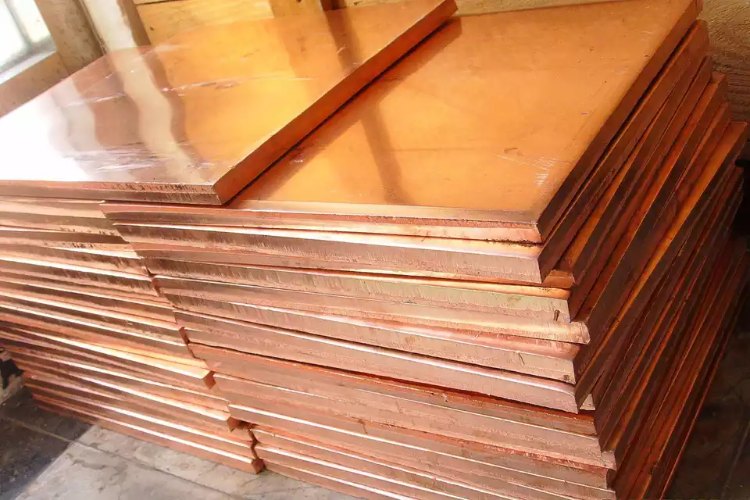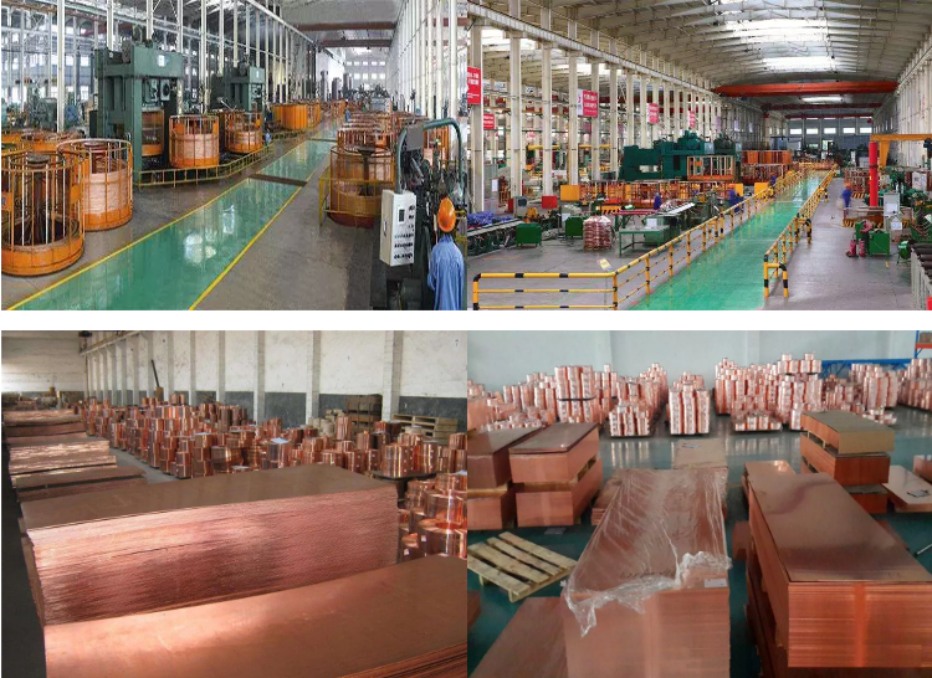Pure copper
Pure copper, as the name implies, is the copper with the highest copper content. Because the color is purple, it is also called red copper. The main component is copper plus silver, with a content of 99.5-99.95%. Main impurity elements: phosphorus, bismuth, antimony, arsenic, iron, nickel, lead, Tin, sulfur, zinc, oxygen, etc.; used to make conductive equipment, high-grade copper alloys, and copper-based alloys.
Pure copper is a rose-red metal, which turns purple after forming a copper oxide film on the surface, so industrial pure copper is often called red copper or electrolytic copper. The density is 8-9g/cm3, and the melting point is 1083°C. Pure copper has good electrical conductivity and is widely used in the manufacture of wires, cables, brushes, etc.; it has good thermal conductivity and is often used to manufacture magnetic instruments and instruments that must prevent magnetic interference, such as compasses and aviation instruments; it has excellent plasticity and is easy to heat. Press and cold press processing, can be made into tubes, rods, wires, strips, strips, plates, foils and other copper materials. Next, JIANGSU TISCO INDUSTRIAL CO.,LTD will introduce to you
Classification of pure copper
(T1, T2, T3), oxygen-free copper (oxygen-free copper, silver oxygen-free copper, zirconium oxygen-free copper and dispersed oxygen-free copper), phosphorus deoxidized copper, special copper with a small amount of alloying elements (arsenic copper, tellurium copper, Silver copper, sulfur copper and zirconium copper) four categories. The electrical and thermal conductivity of copper is second only to silver, and it is widely used in the production of electrical and thermal equipment. Copper has good corrosion resistance in the atmosphere, sea water and some non-oxidizing acids (hydrochloric acid, dilute sulfuric acid), alkali, salt solution and various organic acids (acetic acid, citric acid), and is used in the chemical industry. In addition, copper has good weldability, and can be processed into various semi-finished products and finished products through cold and thermoplastic processing. In the 1970s, the output of red copper exceeded the total output of all other copper alloys.
The theoretical value of pure copper resistivity If various materials are made into wires with a length of 1 meter and a cross-sectional area of 1 square millimeter, their resistance (called the resistivity of this material) is measured at 20 ° C and compared, then the silver The resistivity is the smallest, followed by copper, aluminum, tungsten, iron, manganese copper, nickel-chromium alloy, and the resistivity increases in turn.
Application of pure copper
The resistivity of aluminum wire is more than 1.5 times that of copper wire, its resistivity p=0.0294Ωmm2/m, the resistivity of copper p=0.01851Ω·mm2/m, the resistivity will have some differences with temperature changes. The use of pure copper is much wider than that of iron, and a large amount of copper is used in the production of the electrical industry every year. Pure copper is mainly used to make electrical equipment such as generators, busbars, cables, switchgear, transformers, heat exchangers, pipes, and flat collectors for solar heating devices. Oxygen in copper (a small amount of oxygen is easily mixed in copper smelting) has a great influence on conductivity, and the copper used in the electrical industry must generally be oxygen-free copper. Pure copper is also mainly used in the production of motor short-circuit rings, electromagnetic heating inductors, and high-power electronic components, terminal blocks and the like. Pure copper is also applied to doors, windows, handrails and other furniture and decorations.
Post time: Feb-10-2023

